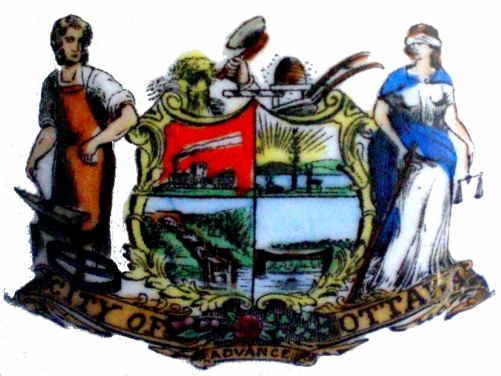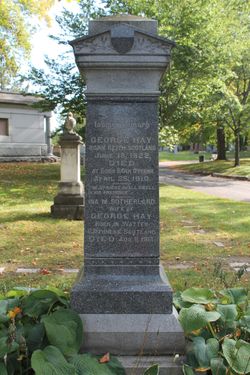Original Shareholder and community leader: George Hay
George Hay
Section 37, Lot 117 N (B)
Born June 18, 1821 in Scotland. George Hay was educated at Keith Grammar School and at Croy Parish School in Nairnshire. He came to the Ottawa valley in 1834 with his parents and spent some years on a farm and subsequently in Montreal. In the 1840s he moved to Bytown (Ottawa), where, after working as Thomas MacKay’s confidential clerk, he entered the hardware business.
He quickly prospered and became active in community affairs. He would later claim to have designed the city’s coat of arms and to have suggested the name Ottawa to replace Bytown.

Hay ran successfully in 1856 and 1857 as a councillor for Wellington Ward, and on 6 June 1856 he was appointed a justice of the peace. In 1857 he helped organize the Ottawa Board of Trade, in which he would hold a number of positions.
During the Fenian disturbances of 1866 he formed a company of militia, but it was not called to the front.
By 1879 he would be a major in the Ottawa militia. He was founder of a long list of enterprises including the Bank of Ottawa, the Board of Trade, Knox Church and Beechwood Cemetery (he was one of the original shareholders).
Finally, Hay had been associated from the outset with the Ottawa Protestant Home for the Aged, organized in 1887 or 1888, and he was a lifelong director. He was, as well, a founder of both the Ottawa-based Lord’s Day Alliance in 1888 and the Metropolitan Society for the Prevention of Cruelty to Animals, and was president of the Ottawa Temperance Society.
Hay’s death in 1910 was said by the Ottawa Citizen to be “due to the inevitable breaking up of the system from old age.” His funeral was widely attended and all branches of the Bank of Ottawa were closed in his memory. George Hay’s passing was marked by the most prominent men of the Upper Town community, among them John Rudolphus Booth, Thomas Ahearn, Erskine Henry Bronson, and Henry Kelly Egan.
He passed away on April 25, 1910 at the age of 88.



